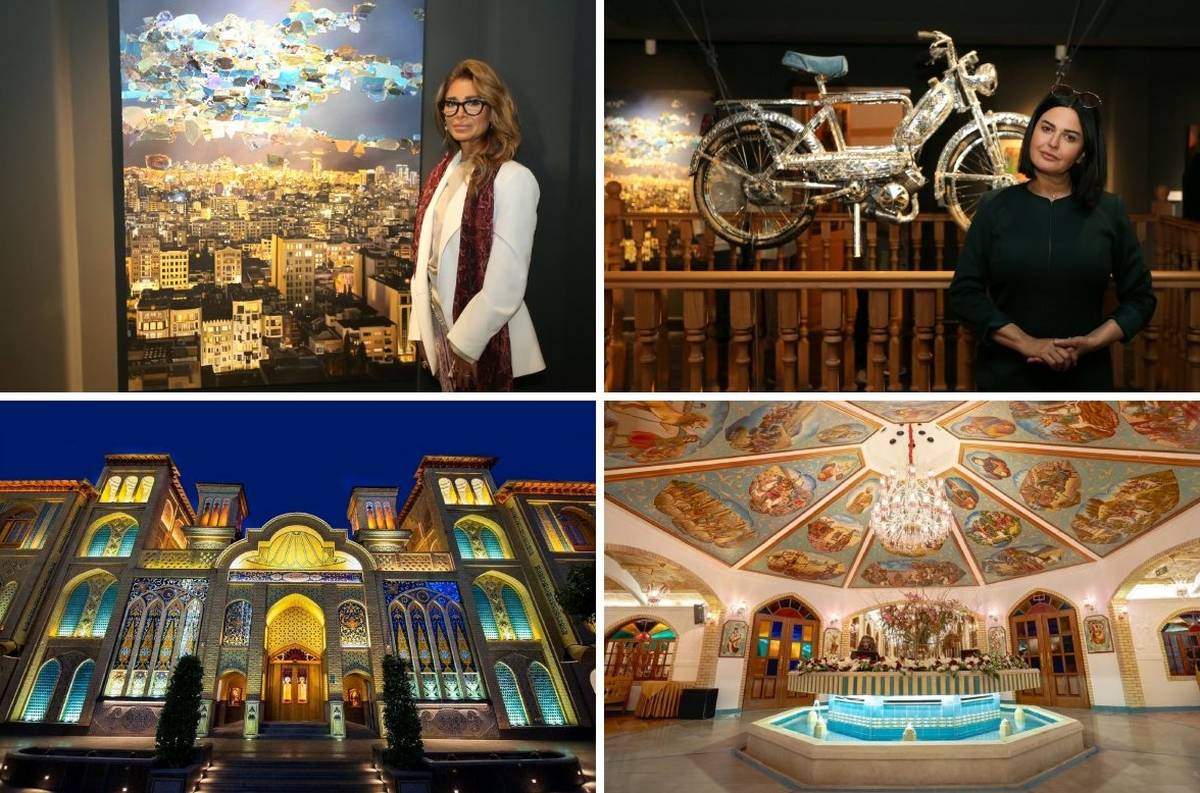
Rashidi Gallery in the Heart of Iran’s First Art Hotel / A Magnificent Scene of Art Tourism at Rashidieh Hotel,Tehran
To reach Rashidi Gallery, one must pass through the sublime, authentic architecture of the grand heritage landmark—Rashidieh Hotel, Tehran—one of the most brilliant examples of renewed Iranian architectural artistry, transporting the viewer to the splendor of Qajar palaces and the refined delicacy of Safavid manuscript painting. Upon entering the gallery, works by Atena Rashidi, Satine Ghaffari, Amin Tavakkol, Tina Pakzad, Nastaran Safaei, and Babak Haghi invite visitors into the realm of contemporary art and its progressive interpretive lens.
ArtDayMe : There is no doubt that Rashidi Gallery stands today as the most distinctive gallery in Tehran—indeed, in all of Iran.
Two minimalist and elegant black boxes, situated across two floors in the heart of the hotel’s dazzling architecture—overflowing with graceful colors and captivating ornament—stand as a key statement on the union of contemporary art with the architectural space and deep-rooted Iranian identity.
_Mohammad Rashidi Torghi: The Vision Behind the Concept
Blessed be the foresight and initiative of the hotel’s late founder, Mohammad Rashidi Torghi, who had envisioned the founding of a gallery from the earliest stages of the hotel’s design.
Had Rashidieh Hotel—conceptualized as a museum-hotel—not included an art gallery, it would surely have lacked a vital icon.
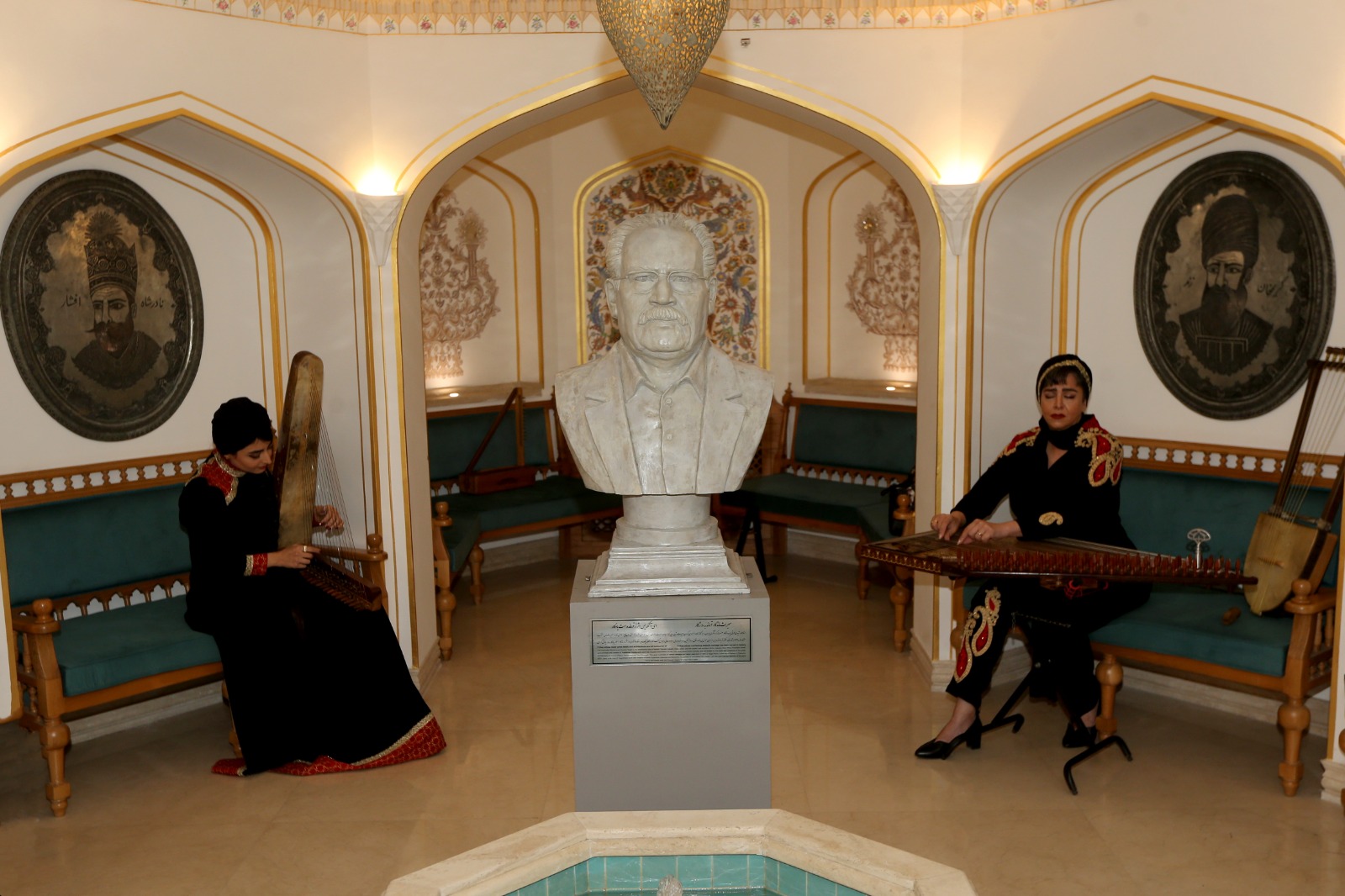
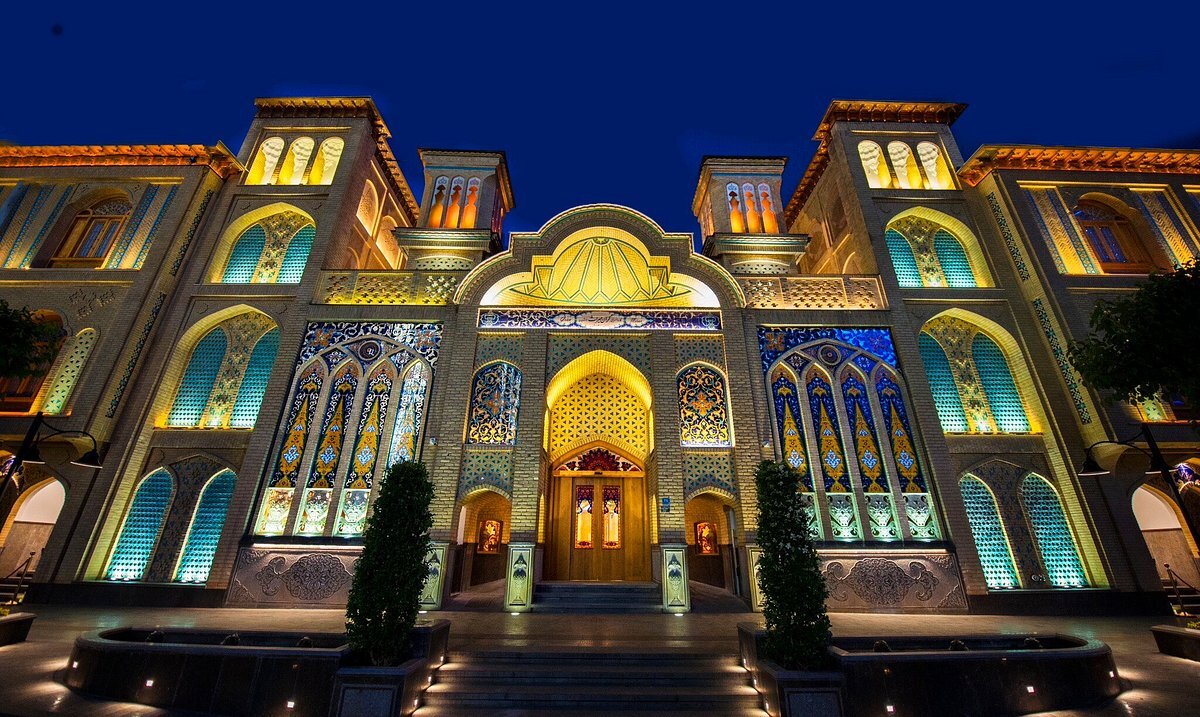
The venue of the exhibition itself forms part of the viewing experience:
The grand heritage Rashidieh Hotel, with its architecture inspired by traditional Iranian art and design, creates an atmosphere within which the gallery resides.
Lighting, arches, columns, chandeliers, ancient doors, wall paintings, tilework, and stucco carvings permeate every corner of the hotel.
Entering this space, the viewer encounters not only works of art, but also an environment where art and architecture speak together.
This is a significant point: The visual experience is elevated from merely looking at artworks to inhabiting an artistic space.
Walls, ceilings, and columns all become components of the exhibition narrative.
_A Fusion of Tradition, Modernism ,and Contemporaneity
The debut exhibition at Rashidi Gallery—through its thoughtful selection of artists—conveyed several messages from the outset:

In Hall One, masterpieces by some of the most celebrated figures in Iranian art were presented;
in Hall Two, works by established young artists and emerging names were showcased.
This curatorial choice shows that Rashidi Gallery intends to present a wide spectrum of artistic creation, opening its doors to the entire range—from artistic heritage to avant-garde experimentation.
In other words, Rashidi Gallery—within Rashidieh Hotel—does not dwell solely in the past, but rather seeks to create a relationship between past, present, and future.
Organized in collaboration with Babak Haghi, this exhibition presents works by 24 prominent and emerging artists.
The exhibition opens with the renowned Allah series by Seyed Mohammad Ehsai—including a radiant, sun-like yellow “Allah”.
Visitors would undoubtedly recognize distinguished examples of works by Iran Darroudi, Reza Mafi, Behjat Sadr, Bahman Mohasses, Parvaneh Etemadi, Hossein-Ali Zabehi, Manouchehr Niazi, Ghasem Hajizadeh, Bahram Dabiri, Shahriar Ahmadi, and Nastaran Safaei.
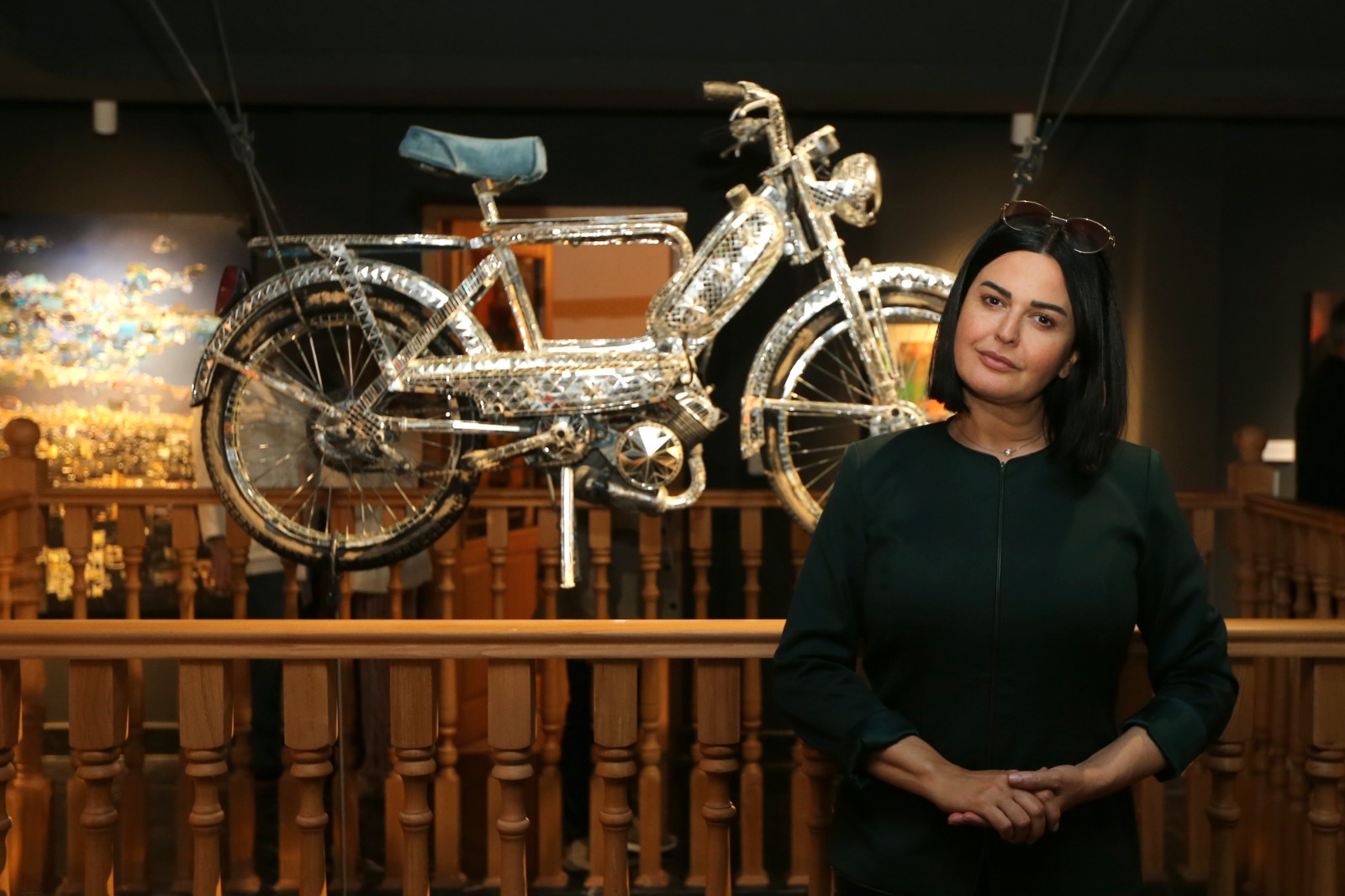
_ Atena Rashidi — A Conceptual Installation
The first and second floors of Rashidi Gallery are connected by a vertical corridor.
Intriguingly, Atena Rashidi—a visual artist who had previously pursued much of her artistic activity in Paris—has installed a conceptual artwork in this corridor, provoking visitor curiosity.
This special installation consists of a motorcycle (above) and a wheelbarrow (below)—both mirror-mosaic-tiled—suspended vertically in space, creating a conceptual and visual bridge between the gallery’s two floors.

The suspended state of these objects disrupts perception, conveying the sense of suspension, passage, and transition.
The mirror-mosaic technique—referencing Iranian artistic tradition—creates a complex field of reflection, engaging the viewer’s image and surroundings, introducing a participatory dimension.
The mud-covered wheels immediately draw attention; their mirrored ornamentation signals their reverence, encouraging the viewer to wonder why they are honored in this way—only to discover that both objects were used in building the Rashidieh heritage hotel and now, transformed into artistic forms, serve as vessels of memory and meaning.
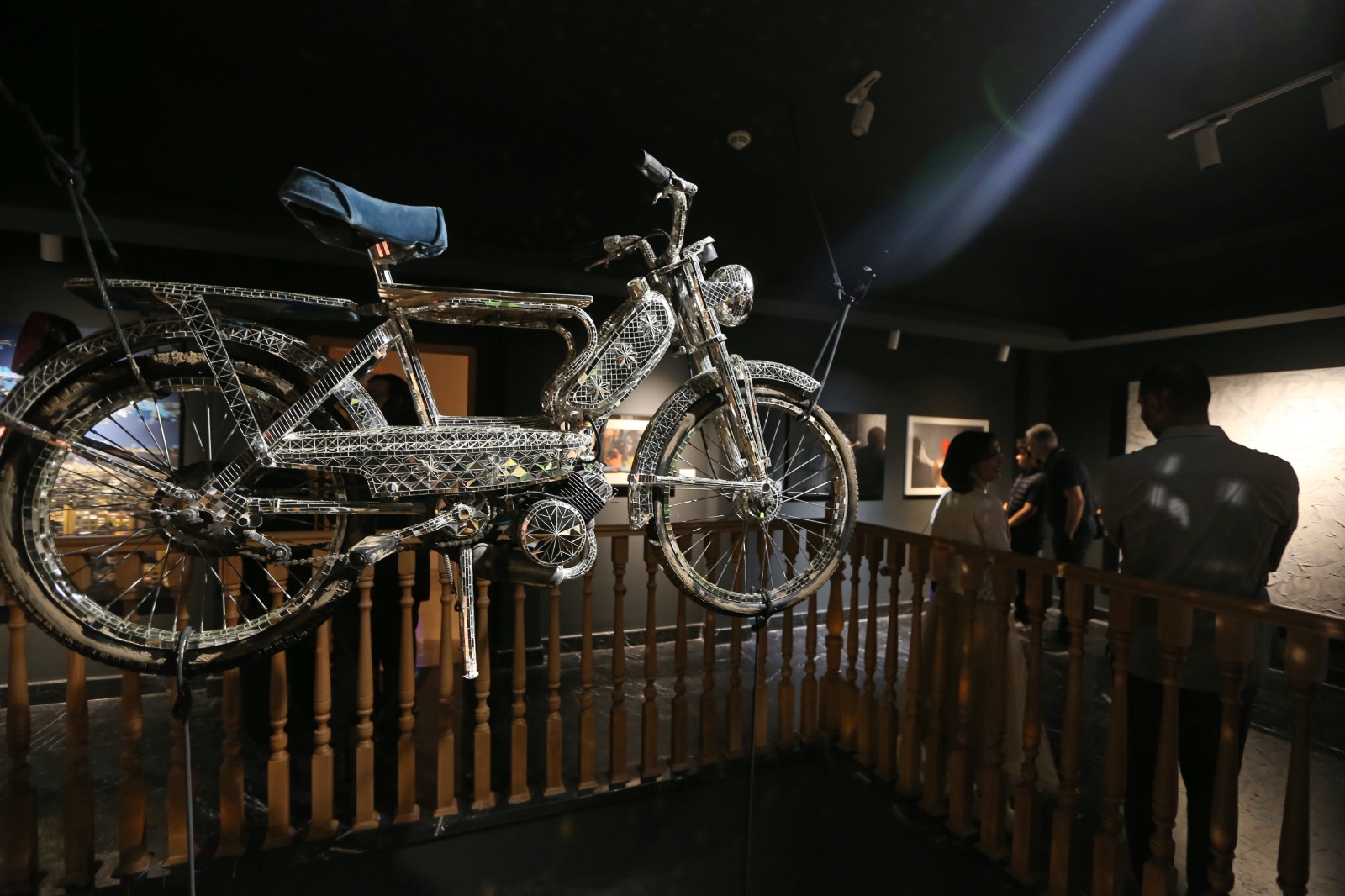
As everyday objects, the motorcycle and wheelbarrow recall the construction phase, labor, and transformation of the heritage building, representing human effort and tools in the formation of space and history.
Their suspended installation between the upper and lower floors symbolizes the connection between past (construction) and present (the reborn gallery identity)—creating a bridge between the building’s physical and conceptual layers.
Focused lighting and multiple mirror reflections produce a unique visual experience, compelling visitors to explore the installation from various angles and move between floors—enhancing the spatial experience and emphasizing notions of movement and change.

This installation transcends material arrangement; through its chosen objects, its manner of suspension, and the interwoven tradition of mirror-mosaic, it becomes a conceptual artwork centered on memory, architecture, and human connection—simultaneously a marker of heritage and an invitation to reconsider the role of object and space in contemporary identity.
In Hall Two, works by Satine Ghaffari, Banafshah Ahmadzadeh, Razieh Iranpour, Fereydoun Omidi, Tania Pakzad, Amin Tavakkol, Babak Haghi, Mehrdad Khatayi, Elham Fatemi, Kiarash Masibi, and Alireza Memariani are on view.

_Satine Ghaffari — A New Gesture in Hyperrealism
Renowned for her exceptional draftsmanship and mastery of hyperrealism, Satine Ghaffari presents four paintings in this exhibition—works that signify a new technical and painterly action within her practice.
The artist, who had preserved her paint palettes throughout 20 years of artistic activity, has now cut and collaged them onto canvas, introducing new layers of meaning to her realist works.
Her portraits of Gholamreza Takhti (“The Mythic Hero of Iran Takhti”)

and of Mohammad-Reza Shajarian (“Master Shajarian”) drew crowds who stood for long moments, compelled by the familiarity and iconicity of the subjects.

Her remarkable ability in rendering facial form impressed viewers; yet, Satine consciously seeks to go beyond hyperrealism—introducing a mosaic-like effect by collaging fragments of her palettes onto the paintings.
The layered construction of the figures grants them vitality, while turbulent strokes and color patches in the background convey energy and cultural resonance, forming a striking contrast with the simplicity of the figures.
In the Takhti portrait, the heroic, grounded posture and focused gaze evoke power, personal identity, and collective memory;
in the Shajarian portrait, a spiritual serenity radiates—a harmony with the master’s artistic character.
Together, the two paintings offer a multi-layered experience of corporeality, memory, and visual symbolism.
Another of Satine’s works—placed on the threshold of Hall Two—combines symbolic realism and contemporary expression.
Part of the “Signs” series, the painting is structured in two clearly distinct visual layers.
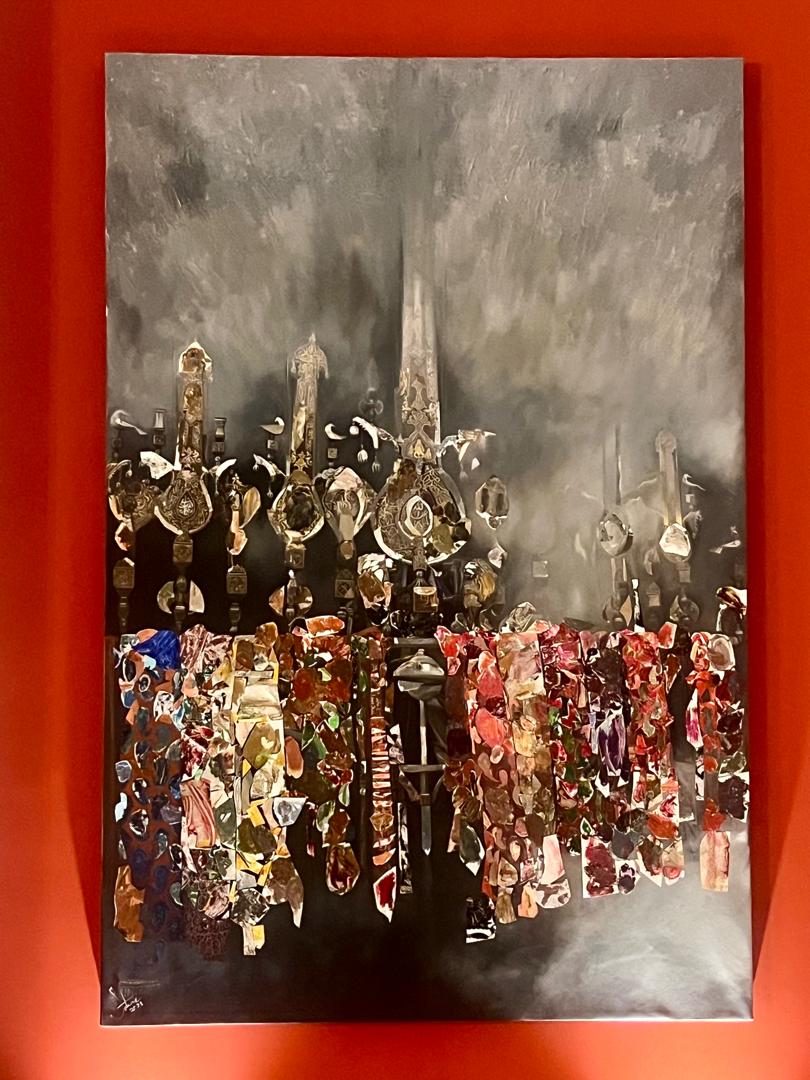
The upper section, rendered in gray tonalities with soft, blurred brushstrokes, creates a mist-like, ritual atmosphere.
Metallic symbolic forms—reminiscent of Ashura standards or ceremonial religious structures—occupy the compositional center, reinforcing notions of ritual and remembrance.
The lower section, bursting with textured collage-like color pieces, generates an emotional rhythm.
The contrast between the cool grays above and the warm radiant hues below creates thematic tension—evoking a dialogue between mourning and the forces of life.
Vertical arrangement guides the viewer from the solemn upper realm to the earthly emotional lower realm.
The multiplicity of textures reflects collective memory, ritual experience, and personal emotion, while spotlights and metal reflections introduce a sacred and ceremonial dimension.
Overall, this work, with its interplay of expressive color, religious symbolism, and layered structure, offers a visual narrative of identity, ritual, and collective memory—inviting contemplation on continuity and redemption.

The fourth work, from the “Tehran” series, confirms that Satine’s intention in this group is to create a dialogue between her hyperrealism and collage.
In the lower section, she renders a nighttime cityscape with exceptional construction and draftsmanship; warm golden lights shining through windows evoke breathing life.
Although the city appears chaotic from an urban perspective, its glowing warmth suggests positive energy.
The new painterly gesture, however, appears in the sky—where luminous color fragments rise like knots of light, becoming glowing pixels escaping upward.
This technique transforms the scene from pure realism into an urban metaphor—balancing physical cityscape with sensory light and visual illusion, encouraging thought on urban environment, identity, and memory.
_Tania Pakzad — Hope and Nostalgia, Even Behind a Closed Door
Tania Pakzad, whose participation at the London art fair and successful exhibitions in Paris and Tehran drew much acclaim, presents a refined minimalist painting at Rashidi Gallery.
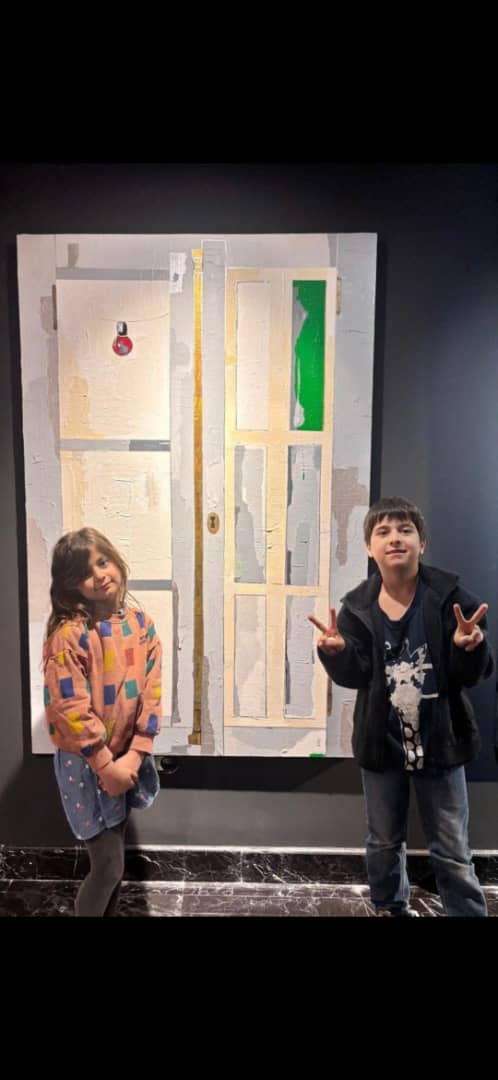
The work resembles a closed door (or perhaps a window); thick textures and neutral surfaces grant it a raw and direct mood.
A green form interrupts the pale surface—suggesting hope or an opening toward an outer world.
A red lock on the left asserts themes of prohibition, privacy, or mystery.
Rigid vertical and horizontal frames produce an ordered geometry that balances stillness with the softness of layered pigment.
A small red bulb—evoking festoon lights used in Iranian celebrations—adds a nostalgic, narrative impulse within the viewer’s mind.
_Nastaran Safaei — Self-Rebirth
Nastaran Safaei presented a strikingly minimal sculpture—a single leg—from her series “Continuous Self-Birthing,” which drew significant attention.

The artist writes: “Each time we take a step on a new path and live, parts of our being detach and are lost. In confusion, to survive and continue our journey, we must gather the remaining pieces and reattach them. The product of this process is a new self that may appear unfamiliar to us.We continue our journey in this new form until another voyage begins.”
_Amin Tavakkol — Hayedeh and Forough
In recent years, the works of Amin Tavakkol have drawn much attention. It appears he seeks to re-read history through icons of society and collective memory.

Gallery + Museum-Hotel = Art Tourism
The cities of Venice, Italy, and Cannes, France are among the world’s leading art-tourism destinations—transformed into magnets for cultural travelers by their biennales and artistic festivals.
Today one may hope that the union of an art gallery and a museum-hotel equipped with modern facilities may spark art tourism in Tehran, the capital of Iran.
The inaugural exhibition of Rashidi Gallery runs until 7 Nov at Rashidieh Hotel,

located at Punak, Hamila (Falahzadeh) Blvd., No. 35, open daily except Saturdays, from 11:00 to 20:00, welcoming artists and art lovers alike.

LEAVE A RELPY